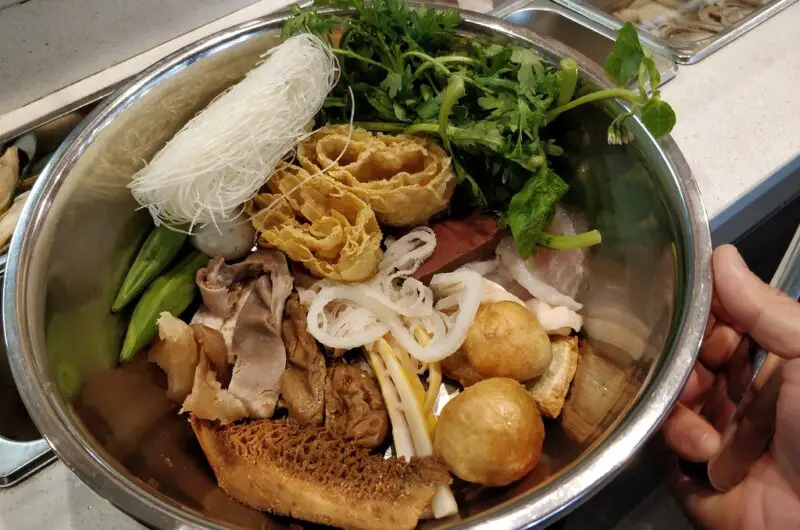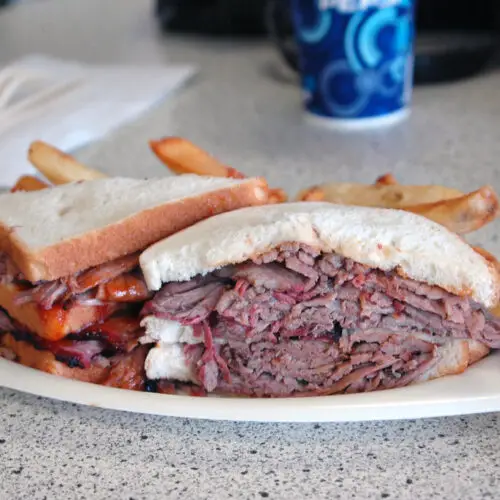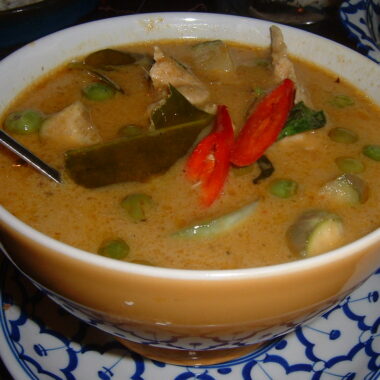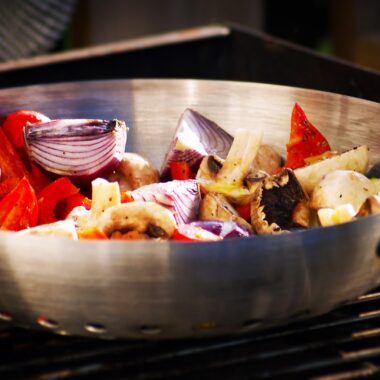Malatang, a fiery and flavorful street food from Sichuan, China, has captured the hearts (and taste buds) of food lovers worldwide. Translating to “spicy hot soup,” malatang is a customizable hot pot-style dish where diners select their favorite ingredients—ranging from vegetables and meats to noodles and tofu—cooked in a fragrant, spicy broth. Unlike traditional hot pot, malatang is typically prepared quickly in individual portions, making it a convenient yet deeply satisfying meal. Whether you’re a spice enthusiast or simply curious about this vibrant dish, this guide will walk you through the history, ingredients, and step-by-step process of creating an authentic malatang at home. By the end, you’ll be ready to recreate this Sichuanese masterpiece in your own kitchen.
A Brief History of Malatang
Malatang originated in Sichuan province, a region renowned for its bold, spicy cuisine. Its roots trace back to the Yangtze River, where boatmen and laborers needed affordable, hearty meals to fuel their long days. Vendors would set up stalls along the riverbanks, offering skewers of meat, vegetables, and tofu cooked in a communal pot of spicy broth. Over time, malatang evolved from a humble worker’s dish to a beloved street food found across China and beyond.
The dish’s appeal lies in its versatility. In modern malatang shops, customers choose their ingredients from a colorful display, and the vendor weighs them before cooking everything in a shared pot of bubbling, aromatic broth. The result is a personalized bowl of spicy, tangy, and umami-packed goodness. Today, malatang has gained global popularity, with restaurants and home cooks adapting the recipe to suit local tastes while preserving its Sichuanese soul.
Why Make Malatang at Home?
Preparing malatang at home offers several advantages. First, you can control the spice level, tailoring it to your preference. Second, you can experiment with fresh, high-quality ingredients, including those that may not be available at local restaurants. Finally, making malatang is a fun, interactive experience—perfect for gatherings with friends or family. With a little preparation, you can bring the vibrant flavors of Sichuan to your table.
This recipe serves 4–6 people and includes a detailed guide to crafting the broth, selecting ingredients, and assembling the dish. Let’s dive into the essentials.
Ingredients for Malatang
Malatang’s beauty lies in its flexibility, but a great bowl starts with a robust broth and a variety of fresh ingredients. Below, we’ve broken down the components into three categories: the broth, the proteins and vegetables, and the noodles or starch.
For the Broth (Makes about 8 cups)
The broth is the heart of malatang, delivering a complex balance of spice, numbness, and umami. Sichuan peppercorns and dried chilies are non-negotiable for authenticity.
2 tablespoons Sichuan peppercorns (red or green, for that signature numbing sensation)
10–15 dried red chilies (adjust for spice tolerance; use Chinese-facing-heaven chilies if available)
3 tablespoons doubanjiang (Sichuan fermented broad bean paste, for depth and heat)
2 tablespoons douchi (fermented black beans, for umami)
1 tablespoon chili oil (homemade or store-bought, for richness)
1 medium onion, roughly chopped
4 cloves garlic, smashed
1-inch piece ginger, sliced
2 star anise
1 cinnamon stick
2 bay leaves
1 tablespoon fennel seeds
1 tablespoon coriander seeds
8 cups chicken or beef stock (homemade or low-sodium store-bought)
2 tablespoons soy sauce
1 tablespoon Shaoxing wine (Chinese cooking wine)
1 teaspoon sugar
2 tablespoons vegetable oil
Salt, to taste
Proteins and Vegetables (Choose Your Favorites)
Malatang is all about variety, so feel free to mix and match based on availability and preference. Aim for 1–2 pounds of proteins and 2–3 pounds of vegetables for 4–6 servings.
Proteins:
Thinly sliced beef or lamb (sukiyaki-style, available at Asian markets)
Chicken breast or thigh, thinly sliced
Fish balls or shrimp balls (available frozen at Asian groceries)
Firm tofu, cubed
Tofu skin or tofu puffs
Shelled shrimp or squid, cleaned
Vegetables:
Napa cabbage, cut into bite-sized pieces
Shiitake or enoki mushrooms
Baby bok choy
Lotus root, thinly sliced
Daikon radish, thinly sliced
Wood ear mushrooms, soaked and sliced
Spinach or watercress
Corn on the cob, cut into small rounds
Other Add-Ins:
Fish tofu or crab sticks
Quail eggs, boiled and peeled
Frozen dumplings or wontons
Noodles or Starch
Noodles soak up the broth’s flavors, adding heartiness to the dish. Choose one or mix a few for texture contrast.
Glass noodles (sweet potato or mung bean, for a chewy texture)
Rice noodles (thin or wide)
Udon noodles (for a thicker, slurpable option)
Potato slices (as a starchy alternative)
Rice cakes (tteok, cylindrical Korean rice cakes)
Garnishes and Dipping Sauces
Garnishes add freshness, while dipping sauces let you customize each bite.
Green onions, thinly sliced
Cilantro, roughly chopped
Toasted sesame seeds
Crushed peanuts
Dipping Sauce Ideas:
Soy sauce + sesame oil + garlic
Chili oil + black vinegar + scallions
Peanut butter + hoisin sauce + chili paste
Equipment Needed
Large pot or Dutch oven (for the broth)
Portable burner or hot pot setup (optional, for a communal experience)
Slotted spoon or spider strainer
Small bowls for dipping sauces
Chopsticks and soup spoons
Step-by-Step Malatang Recipe
Now that you have your ingredients, let’s walk through the process of making malatang. The recipe is divided into three parts: preparing the broth, prepping the ingredients, and cooking and assembling the dish.
Step 1: Make the Malatang Broth
The broth requires time to develop its flavors, so start here. This can be made a day ahead and reheated before serving.
Toast the Spices: In a dry large pot over medium heat, toast the Sichuan peppercorns, dried chilies, star anise, cinnamon stick, fennel seeds, and coriander seeds for 2–3 minutes until fragrant. Stir constantly to prevent burning. Remove and set aside in a small bowl.
Sauté Aromatics: In the same pot, heat 2 tablespoons of vegetable oil over medium heat. Add the onion, garlic, and ginger, cooking for 5 minutes until softened and slightly golden.
Add Doubanjiang and Douchi: Stir in the doubanjiang and douchi, cooking for 2 minutes until the oil turns reddish and the paste is fragrant.
Build the Broth: Return the toasted spices to the pot. Pour in the stock, soy sauce, Shaoxing wine, and sugar. Bring to a boil, then reduce to a simmer. Cover and let it cook for 45 minutes to 1 hour, allowing the flavors to meld.
Strain and Season: Strain the broth through a fine-mesh sieve into a clean pot, discarding the solids. Taste and adjust with salt or additional chili oil for heat. Keep the broth warm over low heat until ready to serve.
Step 2: Prep the Ingredients
While the broth simmers, prepare your proteins, vegetables, and noodles. This step ensures everything cooks quickly and evenly.
Slice Proteins: If using beef, lamb, or chicken, freeze the meat for 20–30 minutes to make slicing easier. Cut into paper-thin slices for quick cooking.
Wash and Cut Vegetables: Rinse all vegetables thoroughly. Cut into bite-sized pieces, keeping harder vegetables (like lotus root and daikon) thinner for faster cooking.
Soak Noodles: If using dried noodles, soak or boil them according to package instructions until al dente. Drain and set aside.
Arrange Ingredients: Lay out your proteins, vegetables, and noodles on platters or in bowls for easy access. This also makes the meal visually appealing if serving family-style.
Step 3: Cook and Assemble the Malatang
Malatang can be cooked in two ways: individually portioned or hot pot-style. For individual portions, follow the steps below. For a communal experience, place the pot of broth on a portable burner at the table and let everyone cook their ingredients.
Bring Broth to a Boil: Ensure the broth is at a rolling boil before adding ingredients. This ensures quick cooking and food safety.
Cook Ingredients in Batches: Add harder vegetables (like lotus root, daikon, or corn) first, boiling for 3–5 minutes until nearly tender. Follow with proteins, which cook in 30 seconds to 1 minute. Add leafy greens and mushrooms last, as they cook in seconds. Use a slotted spoon to remove cooked items, dividing them into serving bowls.
Add Noodles: Place a portion of noodles in each bowl. If using glass noodles or rice cakes, you can briefly boil them in the broth to warm through.
Ladle the Broth: Pour hot broth over the ingredients in each bowl, ensuring everything is submerged. The broth will continue to infuse flavor as it sits.
Garnish and Serve: Sprinkle with green onions, cilantro, sesame seeds, or peanuts. Serve with dipping sauces on the side for extra flavor.
Tips for the Perfect Malatang
Control the Spice: If you’re sensitive to heat, reduce the number of dried chilies or Sichuan peppercorns. You can also serve a small bowl of plain broth or milk on the side to soothe the palate.
Balance Textures: Combine crunchy (lotus root, wood ear), chewy (noodles, tofu skin), and tender (leafy greens, fish balls) ingredients for a dynamic eating experience.
Make It Vegetarian: Swap the chicken or beef stock for vegetable stock and focus on tofu, mushrooms, and vegetables for a plant-based version.
Prep Ahead: The broth and sliced ingredients can be prepared a day in advance, making assembly quick and easy.
Experiment with Dipping Sauces: Get creative with sauces to enhance the experience. A mix of sesame paste, chili oil, and soy sauce is a classic Sichuanese combo.
Cultural Notes and Serving Suggestions
In China, malatang is more than just food—it’s a social experience. Street vendors and small shops create a lively atmosphere where people gather to enjoy quick, affordable meals. Replicate this at home by setting up a hot pot station and encouraging everyone to customize their bowls. Pair malatang with cold drinks like iced tea, soy milk, or even a light beer to balance the heat.
For an authentic touch, serve malatang with small side dishes (banchan-style) like pickled radish, cucumber salad, or spicy fermented tofu. These add contrast and refresh the palate between bites.
Variations on Malatang
While Sichuan-style malatang is the most famous, regional variations exist across China and Asia:
Chongqing Malatang: Even spicier, with a heavier emphasis on chili oil and numbing peppercorns.
Beijing Malatang: Milder, with a focus on lamb and sesame-based dipping sauces.
Korean-Inspired Malatang: Incorporates gochujang (Korean red chili paste) and kimchi for a tangy twist.
Mala Xiang Guo: A dry version of malatang, where ingredients are stir-fried with the same spicy seasonings instead of boiled in broth.
Feel free to adapt the recipe to your taste or pantry. For example, add Thai chili paste for a Southeast Asian flair or incorporate local greens like kale or collards.
Conclusion
Malatang is a celebration of bold flavors, fresh ingredients, and culinary creativity. With its spicy, numbing broth and endless ingredient combinations, it’s a dish that invites experimentation and brings people together. By following this guide, you can craft an authentic malatang experience at home, whether for a solo meal or a festive gathering. So grab your chopsticks, fire up the stove, and dive into the soul-warming world of Sichuanese street food. Your taste buds will thank you.


















